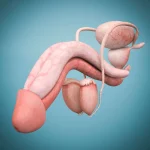What are the benefits of pain relief?
Operations cause pain. If you have good pain control after the operation, you are less likely to have a heart attack (where part of the heart muscle dies), a chest infection and blood clots. You should also get up and about more quickly and may go home sooner.
Simple painkillers
You can use these on their own or combined with other painkillers. After the operation take simple painkillers such as paracetamol, anti-inflammatory painkillers such as ibuprofen. Although these painkillers may not completely treat your pain, if you take them regularly they reduce the amount of other painkillers you might need.
What complications can happen?
- Paracetamol is exceptionally safe in normal doses.
- Anti-inflammatory painkillers can sometimes cause stomach irritation.
- Anti-inflammatory painkillers can make asthma worse but most people with asthma are not affected.
Morphine and similar painkillers
For more severe pain you may be given morphine or similar painkillers such as fentanyl, tramadol, codeine or oxycodone.
These painkillers can be given by mouth once you are eating and drinking normally.
They can also be given by injection either under your skin (subcutaneous), into the muscle (intramuscular) or directly into a vein (intravenous).
Intravenous delivery (using a drip)
The most common intravenous delivery is a technique known as Patient-Controlled Analgesia or PCA. This involves connecting a pump, containing the painkillers, to a drip (small tube) in a vein. The pump has a button that you will be given to hold and when you press the button a small dose of painkillers will be given.
What complications can happen?
- itching
- constipation
- feeling or being sick
- respiratory depression, where your breathing slows down too much
- confusion
Local anaesthetic wound infusion
You may be given a local anaesthetic infusion to help control the pain in the area around your wound and to reduce the amount of other painkillers you need.
A balloon device delivers the anaesthetic through a catheter (tube) to your wound or to the nerves that supply the area of your wound.
What complications can happen?
- the infusion not working properly
- the catheter moving out of place or leaking anaesthetic outside of your wound
- allergic reaction
- local anaesthetic toxicity
Epidural anaesthetic
An epidural involves inserting a fine catheter (tube) into the epidural space (an area near your spinal cord). Local anaesthetics and other painkillers are injected down the catheter into the epidural space to numb your nerves.
Sometimes the anaesthetic is injected continuously (an infusion). The dose can be varied by the healthcare team.
What complications can happen?
- low blood pressure
- difficulty passing urine
- headache
- respiratory depression, where your breathing slows down too much
- seizures
- unexpected high block
- allergic reaction to the equipment, materials or medication
- infection around your spine
- cardiovascular collapse (where your heart stops)
- nerve damage
- blood clot around your spine
- damage to nerves supplying your bladder and bowel
- paralysis or death
Peripheral nerve blocks
You may be offered a peripheral nerve block to give pain relief after an operation on your arm or leg. A nerve block works by temporarily numbing your nerves to give pain relief. This involves injecting local anaesthetics and other painkillers near the major nerves to your arm or leg.
What complications can happen?
- the nerve block not working properly
- allergic reaction
- bleeding
- nerve damage
- local anaesthetic toxicity




